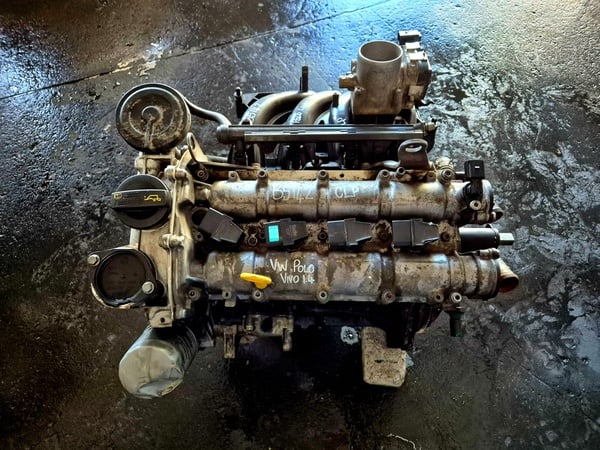Select a durable clp engine for better efficiency.
Wiki Article
How a Clp Engine Can Enhance Efficiency in Different Industries
The development of CLP engines notes a substantial change in operational efficiency across different markets, driven by their ability to enhance fuel consumption and minimize downtime. Industries such as manufacturing and logistics stand to obtain substantially from their robust layout and consistent power output, which assure to simplify operations and boost efficiency. As organizations increasingly focus on sustainability together with effectiveness, the role of CLP engines ends up being a lot more important. What stays to be seen is just how these advancements will form the future landscape of industrial operations and their influence on broader economic fads (clp engine).Introduction of CLP Engines
CLP engines, or Constant Fluid Propellant engines, represent a substantial development in propulsion modern technology, specifically for room applications. These engines use a continual feed system that permits the continual expulsion of propellant, bring about enhanced effectiveness and performance contrasted to conventional strong or hybrid propulsion systems. By keeping a continuous flow of liquid propellant, CLP engines can attain a lot more exact drive control, which is important for navigating spacecraft in various objective scenarios.The style of CLP engines incorporates sophisticated materials and innovative fuel management systems. clp engine. This causes reduced weight and enhanced dependability, vital aspects for long-duration area objectives. The continual operation reduces the risk of combustion instability, a typical difficulty in traditional rocket engines.

Advantages in Production
The manufacturing of Constant Liquid Propellant (CLP) engines offers numerous noteworthy advantages that boost both effectiveness and cost-effectiveness. One of the key benefits is the streamlined manufacturing procedure, which lowers the complexity related to typical propulsion systems. By making use of liquid propellant, makers can attain greater precision in engine performance, bring about maximized energy result and reduced waste.Furthermore, CLP engines help with a greater degree of modularity, permitting less complicated integration into different manufacturing lines. This adaptability can considerably decrease preparations and improve overall functional adaptability. The use of CLP innovation additionally tends to reduce the need for considerable maintenance because of fewer moving components, which equates into lowered downtime and operational costs.

Applications in Logistics
Leveraging Continuous Liquid Propellant (CLP) engines in logistics uses significant benefits in functional efficiency and reliability. These engines provide a durable service for different transportation demands, making it possible for the smooth activity of products across vast ranges. The intrinsic design of CLP engines allows for consistent power outcome, which equates into smoother and a lot more predictable transport routines.Among the essential applications of CLP engines in logistics is in heavy-duty products transport, where they can drive both ground and airborne vehicles. Their ability to preserve high performance under differing load problems ensures that distribution timelines are fulfilled, therefore improving client fulfillment. Furthermore, CLP engines can be incorporated right into automated logistics systems, facilitating real-time monitoring and enhancing path planning.
In addition, the sturdiness of CLP engines reduces maintenance downtime, enabling logistics companies to optimize their functional capabilities. This is especially advantageous in warehousing operations, where efficiency in managing and moving items is essential. As logistics proceeds to progress, the integration of CLP engines stands for a forward-thinking approach that not just enhances performance yet likewise supports the industry's expanding demands for integrity and speed.
Influence on Energy Effectiveness
How do Continuous Fluid Propellant (CLP) engines boost energy effectiveness in transport? CLP engines make use of a constant circulation of fluid fuel, enhancing combustion processes and maintaining a look at more info stable drive outcome. This layout lessens power losses related to typical burning engines, where fuel distribution can vary and bring about inadequacies.The continual operation of CLP engines permits for a much more reliable thermal cycle, leading to higher details impulse compared to traditional engines. clp engine. This equates to minimized fuel intake for the very same quantity of work done, substantially lowering operational prices across various transportation fields, consisting of aeronautics and maritime markets
Furthermore, the ability of CLP engines to maintain optimum efficiency under differing lots problems reduces the demand for constant acceleration and deceleration, additionally boosting fuel efficiency. Improved energy performance not only adds to set you back savings however also brings about reduce greenhouse gas exhausts, home lining up with global sustainability objectives.
Future Trends and Innovations
Arising improvements in Continuous Fluid Propellant (CLP) engine technology guarantee to revolutionize the landscape of transportation efficiency and sustainability. As sectors pivot towards greener alternatives, CLP engines stand at the leading edge, incorporating innovative materials and style methodologies that enhance efficiency while minimizing ecological influence.One of the most encouraging patterns is the fostering of hybrid systems that incorporate CLP engines with eco-friendly energy resources. This harmony can maximize fuel intake and minimize exhausts, aligning with global sustainability goals. Innovations in computational liquid characteristics (CFD) are facilitating the style of more aerodynamically efficient engines, leading to minimized drag and boosted fuel performance.
In addition, the development of smart tracking systems is set to improve functional performances. These systems utilize information analytics and IoT technology to enhance engine efficiency in real-time, ensuring that the engines run within their most efficient parameters.
As research study remains to discover different propellant solutions-- such as biofuels and artificial gas-- the future of CLP engines looks appealing. By taking advantage of these innovations, industries can not just enhance their efficiency yet additionally contribute considerably to a cleaner, a lot more sustainable future in transportation.
Verdict
In conclusion, CLP engines represent a significant improvement in performance across numerous sectors. The combination of sophisticated materials and fewer relocating parts lessens upkeep demands, while positioning with sustainability goals placements CLP engines as a pivotal technology for the future.Report this wiki page